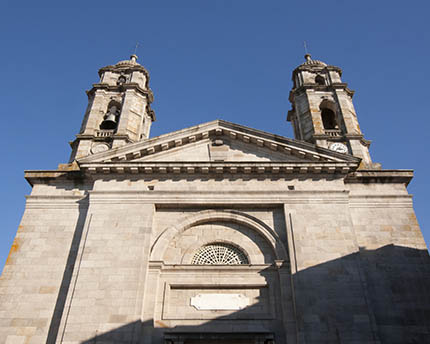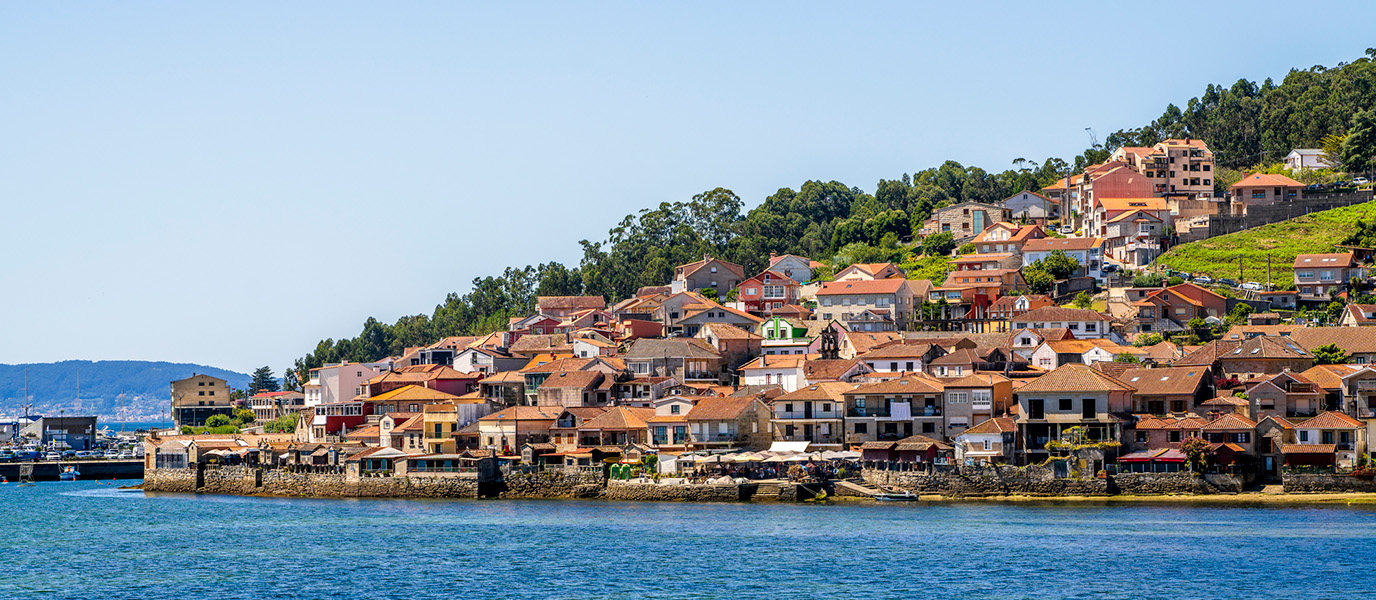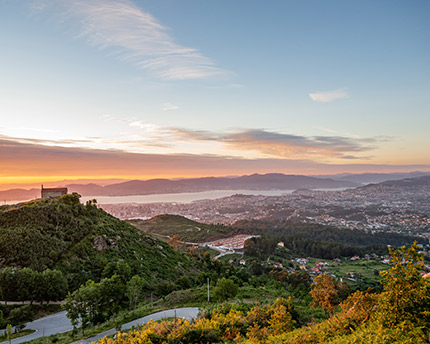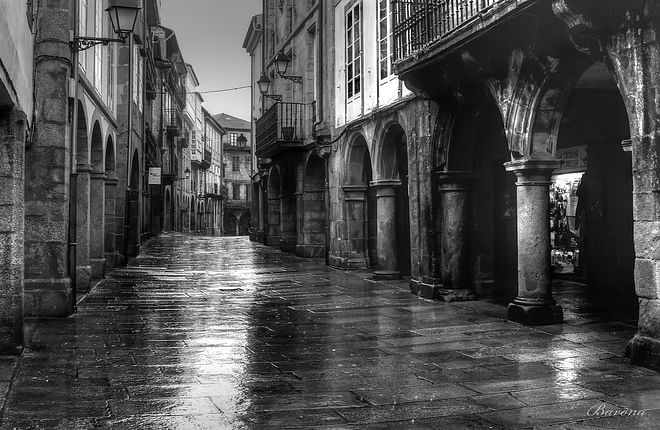Vigo’s co-cathedral, which was built in the early 19th century, is the largest Catholic place of worship in the Galician capital and shares the cathedral seat of the Tui-Vigo Diocese with Tui Cathedral. It was designed by the architect Melchor de Prado y Mariño and stands on the same site as the city’s old collegiate church, which suffered considerable damage when a powder magazine exploded in the nearby El Castro Castle in 1809. Some historical documents suggest that other churches had previously occupied the same site prior to the construction of this collegiate church.
This primarily Neo-classical cathedral with Baroque-style towers, which is located in the Plaza de la Iglesia in Vigo’s old town, is named in honour of Saint Mary. Construction on the temple began in 1816 and lasted until 1838 with the completion of the tabernacle and side altars.
History of Vigo Cathedral
The architect Melchor de Prado y Mariño was commissioned to design and build Vigo’s co-cathedral. Although he submitted his plans in 1811, building work didn’t begin for another five years due to the Peninsular War. The large mosaics of the main altar are the work of artist Santiago Padrós. They depict two angels – one carrying the tablets of the Law, and the other the Holy Gospels – with the cities of Istanbul, the ancient Constantinople and Rome at their feet.
In 2020, Pope Francis approved the designation of Vigo’s co-cathedral as a minor basilica, after approving the applications submitted by the Christ of Victory Brotherhood and the Bishopric. With this designation, it became Galicia’s seventh basilica. For a church to receive basilica designation, it must meet the following requirements: it must be architecturally significant; it must be a focus of great spiritual devotion for the community; and it must be a spiritual treasure that receives uninterrupted worship.
Visiting Vigo’s co-cathedral
Vigo’s co-cathedral is notable for its robust architectural structure. It has a rectangular floor plan with side chapels located under two naves that are narrower than the central one, and its main altar is presided over by an impressive Churrigueresque altarpiece. The central and side naves have barrel-vault roofs, and all three are separated by sturdy Doric columns. The main façade is flanked by two Baroque towers that contrast with the neoclassical sobriety of the rest of the building.
The sundial on the right-hand side of the façade is also unique since it is one of the few sundials that are not south-facing. This timepiece, which is known as a declining sundial, was fitted in 1837 by the sculptor Juan Agustín Domínguez.
The Co-Cathedral of Santa María houses the 18th-century sculpture of the Christ of Victory, which is possibly Vigo’s most important religious emblem. This sculpture is paraded around the city in a procession on the first Sunday in August as a preamble to Vigo’s week of ‘fiestas’. The people of Vigo attribute the victory over the Napoleonic troops in 1809 to this religious icon.
The collegiate church is close to the A Pedra market and the Plaza de la Constitución.
Information about your visit (opening hours, price, etc.)
Vigo’s co-cathedral is open throughout the day, with masses and other religious ceremonies held in the morning and afternoon practically every day of the year. Visitors can enter for free. Mass is held at 11 a.m., 12 p.m. and 7 p.m. every day between 1 October and 31 May. There is an additional mass at 1 p.m. on Sundays.
The summer schedule is the same, although the last mass takes place at 8 p.m. instead of 7 p.m.
Where to stay in Vigo
If you’re looking to discover Vigo’s co-cathedral and stay somewhere that guarantees a quiet and comfortable night’s sleep without breaking the bank, we recommend the Occidental Vigo hotel. This welcoming four-star establishment on the Galician city’s Via Norte is just a stone’s throw from the centre and enjoys magnificent views of the Vigo estuary. It has 104 modern and comfortable bedrooms with all the amenities you could need for a memorable stay.






















































































